
| Photos Continued from previous page From Wyoming Tales and Trails This Page: Advent of Automobiles and buses continued. |
 |

| Photos Continued from previous page From Wyoming Tales and Trails This Page: Advent of Automobiles and buses continued. |
 |
|
|
|
About This Site |
|
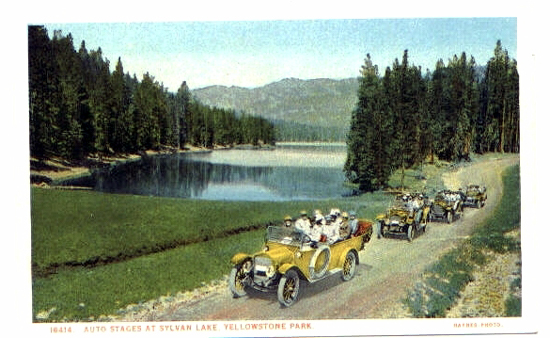 Auto Stages, Sylvan Lake, Photo by F. J. Haynes. In 1916 with the consolidation of services, the Yellowstone Park Transportation Company was required to replace the previous stages with 116 "auto stages" manufactured by White Motor Company of Cleveland, Ohio.
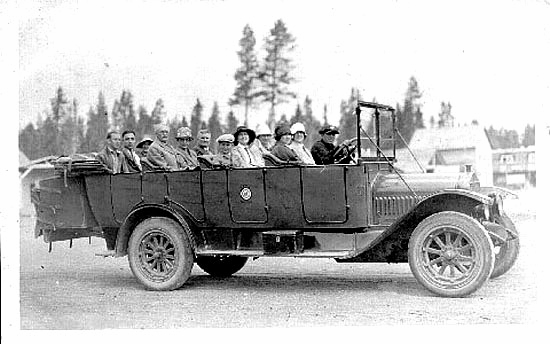 White Motor Bus, 1927 White motor buses remained in use in the Park until the early 60's, but continued to be used in Glacier National Park until 1999, when metal fatigue problems arose. The metal fatique was as result of modifications made to the chassis when modernizing the running gear. Without the modifications it was determined that the vehicles, many of which were 65 years old, could have continued another 65 years.
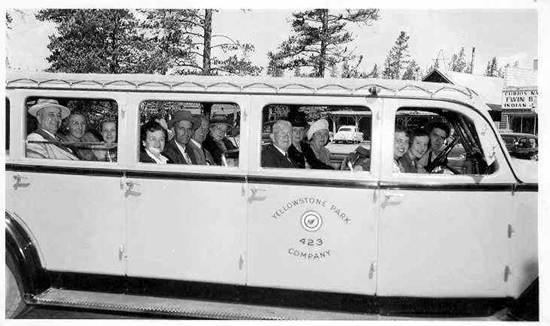 White Motor Bus, approx. 1950. Secretary Lane was correct, of course. The admission of autombiles to the park opened the park to many who could not take the time or expense to visit the park as a part of a tour. Prior to the automobile being permitted in the park, visitors saw the park in five day tours sponsored by the hotel or camping company with which they stayed. The automobile permitted visitors to see what they wanted in the length of time they had available.
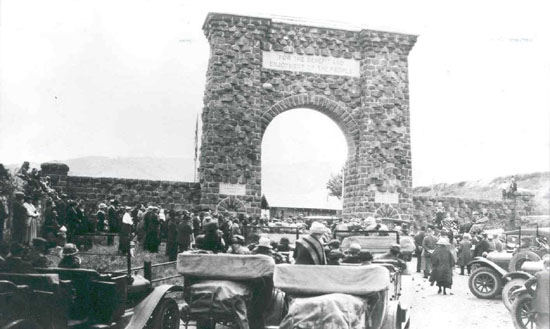 Automobiles awaiting opening of park for the season on June 20, 1923.
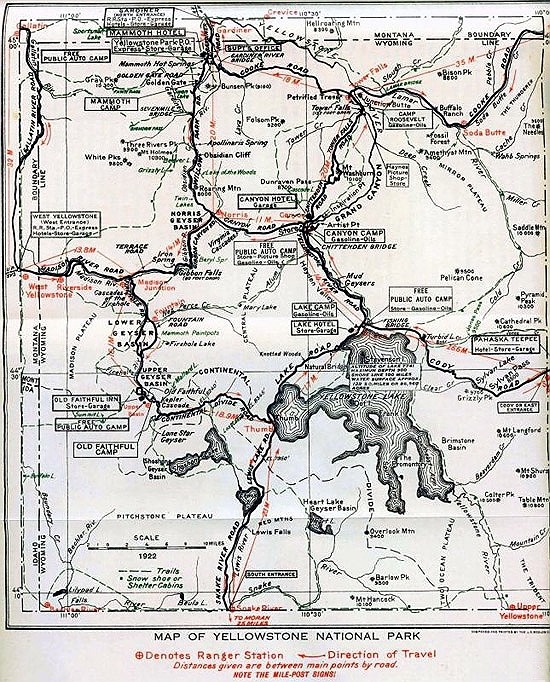 1922 Map of Yellowstone National Park
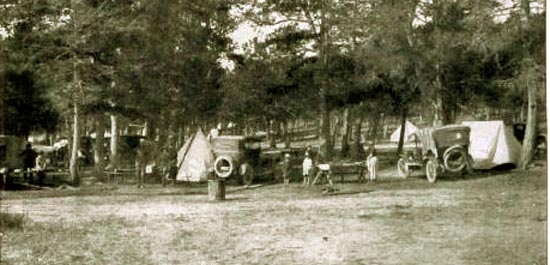 Autocamp, Mammoth Hot Springs, 1922
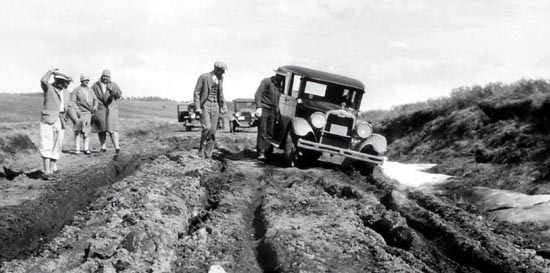 Road in Yellowstone, 1920's.
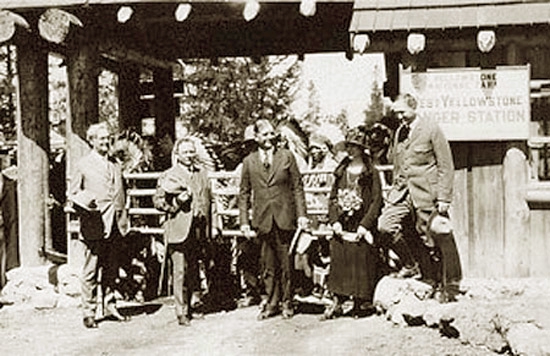 Opening of West Entrance to Park, June 18, 1925; L to R, Idaho Governor Charles C. Moore, Montana Governor John E. Erickson, Utah Governor George H. Dern, Wyoming Governor Nellie T. Ross, Park Superintendent Horace M. Albright
|

